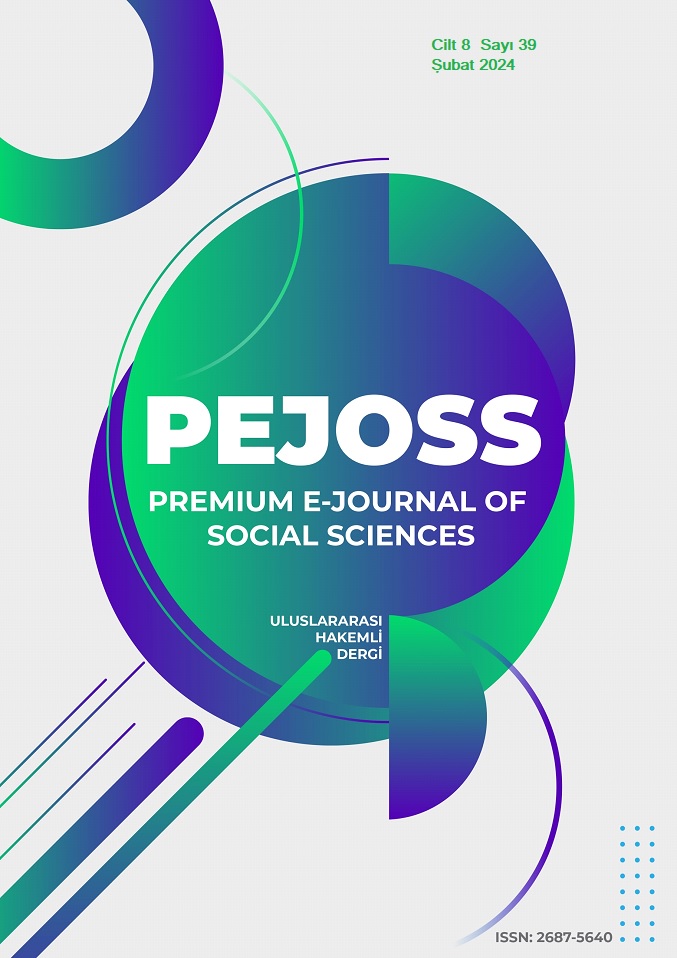Certain Evaluations on the Interpretation of the Camel of Prophet Salih (pbuh) as a Cult
DOI:
https://doi.org/10.5281/zenodo.10760679Keywords:
Tafsir, Miracle, Cult, Symbol, Prophet Salih, CamelAbstract
In the present article, the claims regarding the interpretation of the she-camel mentioned in the context of the parable of Prophet Salih (pbuh) as a “cult” are investigated. When Prophet Salih (pbuh) invited his tribe to the unity of Allah, they demanded a miracle from him. Allah sent a she-camel as clear proof that he was a prophet. Since the she-camel is attributed to Allah as “the camel of Allah” in certain verses, commentators regard it as a miracle proving the prophethood of Prophet Salih (pbuh). However, certain contemporary commentators of the Qur’an claim that the camel in question was a religious cult of the pre-Islamic Arabs. According to them, the parable of Prophet Salih (pbuh) is taken out of its historical context by commentators and evaluated only within the framework of the power of Allah and the relationship between lafz and mana. However, the method of understanding the Qur’an should be based not only on the relationship between lafz and mana, but also on the relationship between script and history. The attribution of the she-camel to Allah is meant to indicate that the animal in question does not belong to any one person and therefore the whole community is obliged to protect it. Furthermore, according to them, the events depicted as miracles in the parable of Prophet Salih (pbuh) and other parables are merely the formulation of natural events in accordance with the theocentric language system. Again, according to them, the demand of Allah to respect the right of the she-camel to drink water and not to kill it actually symbolizes the need to respect the rights of the weak and powerless, orphans and the poor within the public sphere. We are of the opinion that it is important to examine such claims, which are completely different from the miracle-centered interpretations of commentators, in terms of tafsir literature. Therefore, in the present study, the claims and arguments of those who consider the she-camel mentioned in the context of the parable of Prophet Salih (pbuh) to be a cult will be analyzed and evaluated.
Downloads
References
Beydâvî, N. E. S. (1418). Envâru’t-tenzîl ve esrâru’t-te’vîl. Dâru İhyâi’t-Turâsi’l-‘Arabî.
Coşkun, İ. (2017). Modern Çağ Deizminin Nedenleri ve Sonuçları. Vecihi Sönmez vd. (Edl.), Din Karşıtı Çağdaş Akımlar ve Deizm içinde (s. 41-70). Ensar Neşriyat.
Dindi, E. (2020a). Kur’ân’ı Teosentrik ve Tarihî Okuma Denemesi: Ashâbu’l-Fîl Örneği. Korkut Dindi (Ed.), Tarih Felsefesi Açısından Kur’ân Kıssaları içinde (s. 17-54). Ankara Okulu Yayınları.
Dindi, E. (2020b). Kur’ân’ı Teosentrik ve Tarihî Okuma Denemesi: Seylü’l-Arim Örneği. Korkut Dindi (Ed.), Tarih Felsefesi Açısından Kur’ân Kıssaları içinde (s. 55-79). Ankara Okulu Yayınları.
Ebû Hayyân, M. Y. (1420). el-Bahru’l-muhîd fi’t-tefsîr. Dâru’l-Fikr.
İbn Ebî Zemenîn, E. A. (1423/2002). Tefsîru’l-Kur’âni’l-‘Azîz. el-Fârûku’l-Hâdise li’t-Tıbâ‘ah ve’n-Neşr.
İbn Kesîr, İ. E. (1419). Tefsîru’l-Kur’âni’l-‘Azîm. Dâru’l-Kütübi’l-‘İlmiyye.
Îcî, M. A. (1424/2004). Tefsîru’l-Îcî câmi’u’l-beyân fî tefsîri’l-Kur’ân. Dâru’l-Kütübi’l-‘İlmiyye.
Kâdî Abdülcebbâr. (1416/1996). Şerhu’l-usûli’l-hamse. Mektebetu Vehbe.
Kâdî Abdülcebbâr. (2013). Şerhu’l-usûli’l-hamse: Mu’tezile’nin beş ilkesi. TYEKB.
Kurtubî, E. A. (1384/1964). el-Câmî’ li ahkâmi’l-Kur’ân (2. Baskı.). Dârü’l-Kütübi’l-Mısriyye.
Mahallî, C. & Suyûtî, C. (ts.). Tefsîru’l-Celâleyn. Dâru’l-Hadîs.
Mâtürîdî, E. M. (2016). Kitâbü’t-tevhîd açıklamalı tercüme (8. Baskı.). (Çev.). Bekir Topaloğlu. İSAM Yayınları.
Mâtürîdî, E. M. (ts.). Kitâbü’t-tevhîd, (Nşr.). Fethullâh Huleyf. el-İskenderiyye.
Mukâtil b. Süleymân, E. H. (1423). Tefsîru Mukâtil b. Süleymân. Dâru İhyâi’t-Turâs.
Nesefî, E. B. (1419/1998). Medâriku’t-tenzîl ve hakâiku’t-te’vîl. Dâru’l-Kelimu’t-Tayyib.
Neysâbûrî, N. H. (1416). Garâibu’l-Kur’ân ve reğâibu’l-furkân. Dâru’l-Kütübi’l-‘İlmiyye.
Özdemir, F. (2021). Kur’ân’ın teosentrik ve antroposentrik yorumu. Araştırma Yayınları.
Palabıyık, M. H. & Dindi, K. (2020.) Deve ile İlgili Bir Kültün Mucizeye Dönüşmesi: Hz. Salih’in Devesi. Korkut Dindi (Ed.), Tarih Felsefesi Açısından Kur’ân Kıssaları içinde (s. 81-118). Ankara Okulu Yayınları.
Râzî, E. A. (1420). et-Tefsîru’l-kebîr, mefâtîhu’l-gayb (3. Baskı.). Dâru İhyâi’t-Turâsi’l-‘Arabî,
Sa‘lebî, E. İ. (1422/2002). el-Keşf ve’l-beyân ‘an tefsîri’l-Kur’ân. Dâru İhyâi’t-Turâsi’l-‘Arabî.
Semerkandî, E. L. (1413/1993). Tefsîru’s-Semerkandî: Bahru’l-‘ulûm. Dâru’l-Kütübi’l-‘İlmiyye.
Şehristânî, E. F. (1414/1993). el-Milel ve’n-nihal (3. Baskı.). Dâru’l-Ma’rife.
Şehristânî, E. F. (2015). el-Milel ve’n-nihal, (Çev.). Mustafa Öz. Litera Yayıncılık.
Şirbînî, Ş. M. (1285). es-Sirâcu’l-münîr. Matba‘atu Bûlâk (el-Emîriyye).
Teftâzânî, S. M. (1407/1987). Şerhu’l-‘akâidi’n-nesefiyye. Mektebetü’l-Külliyyâti’l-Ezheriyye.
Vâhidî, E. H. (1415/1994). el-Vasîd fî tefsîri’l-Kur’âni’l-Mecîd. Dâru’l-Kütübi’l-‘İlmiyye.
Zeccâc, E. İ. (1408/1998). Me‘âni’l-Kur’ân ve i‘râbuh. Âlemu’l-Kütüb.
Zemahşerî, E. K. (1407). el-Keşşâf ‘an hakâiki ğavâmidı’t-tenzîl ve ‘uyûni’l-ekâvîl fî vucûhi’t-te’vîl. (3. Baskı.). Dâru’l-Kütübi’l-‘Arabiyy.
Downloads
Published
How to Cite
Issue
Section
License
Copyright (c) 2024 Premium e-Journal of Social Science (PEJOSS)

This work is licensed under a Creative Commons Attribution 4.0 International License.


